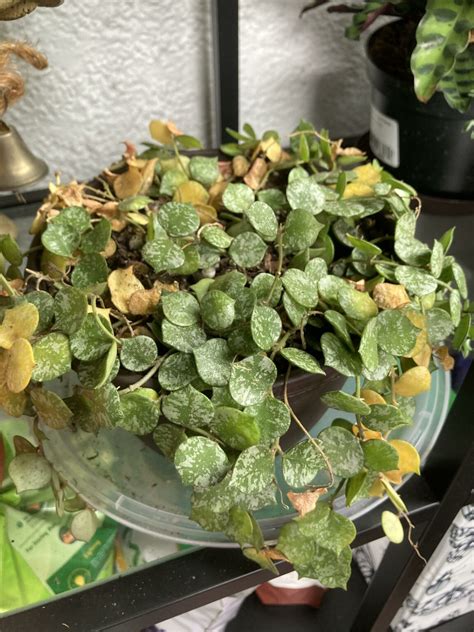Prevent Hoya Disease Through Proper Watering
Hoyas, with their charming waxy foliage and delightful blooms, are popular houseplants. However, these seemingly resilient plants are susceptible to various diseases, many of which stem from improper watering techniques. Understanding the intricacies of Hoya watering is crucial for preventing diseases and ensuring your plant thrives. This guide will delve into the specifics of proper Hoya watering, addressing common concerns and offering practical tips for keeping your Hoya healthy and vibrant.
What are the Common Diseases Affecting Hoyas?
Before diving into watering techniques, let's briefly discuss the diseases that often plague Hoyas. Many of these are directly or indirectly related to watering issues:
-
Root Rot: This is the most common and devastating Hoya disease, caused by overwatering. Soggy soil deprives roots of oxygen, leading to decay and eventual plant death. Symptoms include yellowing leaves, wilting, and a foul odor emanating from the soil.
-
Leaf Spot Diseases: These fungal or bacterial infections often manifest as brown or black spots on the leaves. While not always directly caused by watering, excessive moisture on the foliage creates an ideal environment for these pathogens to thrive.
-
Phytophthora: This soilborne disease affects the roots and crown of the plant, causing wilting, leaf drop, and ultimately, plant death. Overwatering significantly increases the risk of Phytophthora infection.
How Often Should I Water My Hoya?
This is arguably the most frequently asked question about Hoya care. There's no one-size-fits-all answer, as watering frequency depends on several factors:
-
Pot Size and Type: Larger pots retain moisture longer than smaller ones. Terracotta pots are porous and dry out faster than plastic or ceramic pots.
-
Soil Mix: A well-draining soil mix is essential for Hoyas. A mix incorporating perlite, orchid bark, or coco coir will prevent soggy soil conditions.
-
Environmental Conditions: Higher temperatures and lower humidity will cause the soil to dry out more quickly.
Instead of adhering to a strict schedule, focus on the soil's condition. Allow the top inch or two of soil to dry out completely before watering thoroughly. Water until water drains from the drainage holes, then discard any excess water in the saucer.
How Much Water Does a Hoya Need?
Overwatering is far more detrimental to Hoyas than underwatering. It's better to underwater slightly than to overwater. When watering, aim for thorough saturation, ensuring the entire root ball is moistened. However, avoid letting the plant sit in standing water, which can lead to root rot.
What are the Signs of Overwatering in Hoyas?
Recognizing the signs of overwatering is crucial for taking corrective action. Look for these indicators:
-
Yellowing Leaves: While yellowing can have other causes, it's a common symptom of overwatering.
-
Drooping Leaves: This indicates that the roots aren't able to absorb water efficiently, often due to root rot.
-
Soft, Mushy Stems: This is a clear sign of severe root rot.
-
Foul-Smelling Soil: A pungent odor often accompanies root rot.
What are the Signs of Underwatering in Hoyas?
Underwatering is less harmful than overwatering, but prolonged drought can still stress your plant. Signs of underwatering include:
-
Dry, Crisp Leaves: Leaves will feel brittle and may start to brown at the edges.
-
Wilting: Although wilting can also indicate overwatering, in the context of dry soil, it clearly signals a lack of water.
How to Water a Hoya Properly?
Proper watering involves more than just pouring water into the pot. Here's a step-by-step guide:
-
Check the Soil Moisture: Before watering, insert your finger about an inch into the soil. If it feels dry, it's time to water.
-
Water Thoroughly: Water until water drains from the drainage holes.
-
Remove Excess Water: Empty any water that collects in the saucer to prevent root rot.
-
Avoid Getting Water on the Leaves: While occasional splashing won't harm the plant, try to keep the leaves dry to minimize the risk of fungal diseases.
-
Adjust Watering Frequency Based on Environmental Conditions: Increase watering frequency during hot, dry weather and reduce it during cooler, more humid periods.
How can I prevent root rot in my Hoya?
Preventing root rot is paramount for Hoya health. The key lies in:
-
Using a Well-Draining Potting Mix: Ensure your mix contains ample perlite, orchid bark, or other well-draining materials.
-
Choosing the Right Pot: Select a pot with drainage holes to allow excess water to escape.
-
Avoiding Overwatering: Allow the top inch or two of soil to dry out between waterings.
-
Ensuring Proper Air Circulation: Good air circulation around the plant helps the soil dry out more quickly and reduces the risk of fungal diseases.
By following these guidelines and paying close attention to your Hoya's needs, you can significantly reduce the risk of disease and enjoy the beauty of this wonderful plant for years to come. Remember, preventative care is always better than cure when it comes to plant health.

